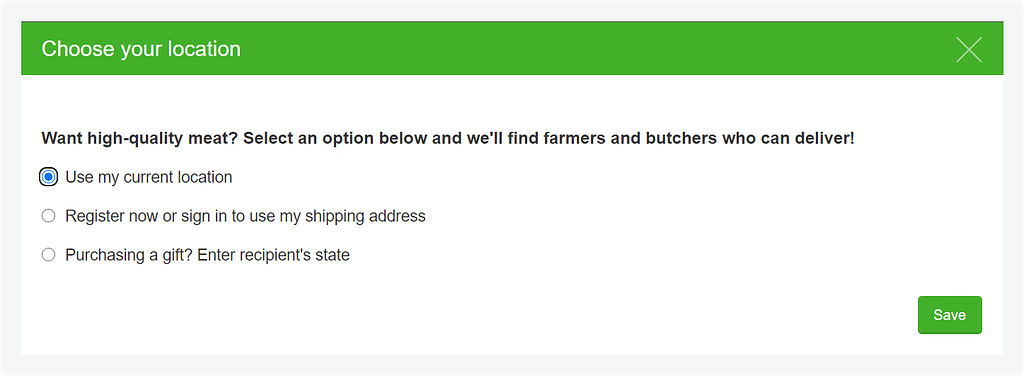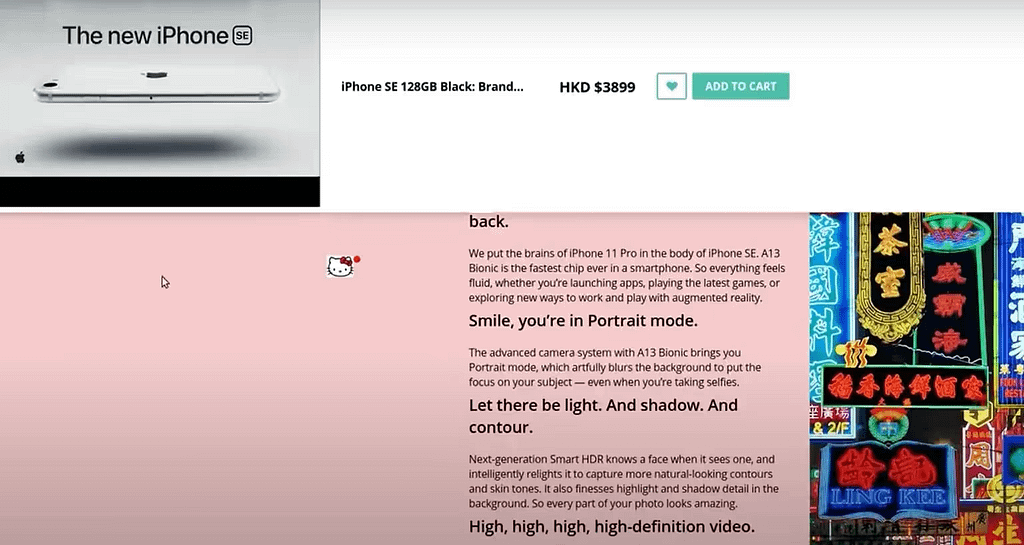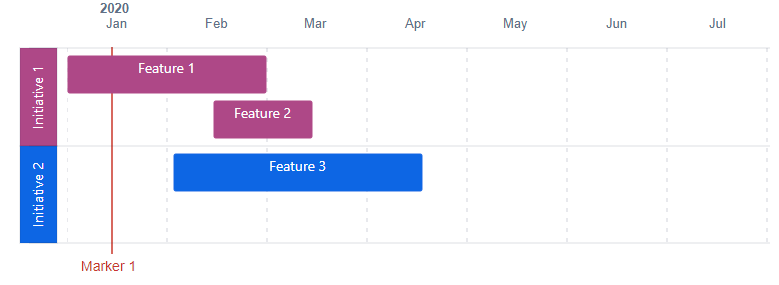You’re about to embark on launching your very own online marketplace. Before you dive in, you need to gather your crew, map out the terrain, and figure out what treasures (or challenges) lie ahead. That’s where a discovery session comes into play!
In this comprehensive guide, we will delve into the purpose, structure, and best practices of discovery sessions, equipping you with the knowledge to facilitate effective meetings that drive project success and innovation. Whether you’re a project manager, developer, or business owner, mastering the art of discovery sessions can transform your approach to project planning and execution.
What Is a Discovery Session?
A discovery session is a structured meeting designed to collect insights, clarify goals, and align all the key players on a project. Think of it as the brainstorming bonanza, where everyone gets to throw their ideas into the mix. It’s like a potluck dinner, but instead of bringing casseroles, stakeholders bring their visions, concerns, and expertise to the table.
For instance, if you’re launching an eCommerce platform that connects local artisans with buyers, you’d want to invite everyone from your tech team to your marketing gurus, and even a few potential users. During this session, you might discuss what features will make your marketplace stand out—maybe a unique filtering system that lets users search for crafts based on sustainability or local delivery options. If you’re planning to add new tools or external services, consider holding an integration discovery session to assess how well everything fits together technically.
Imagine someone suggesting a feature inspired by Etsy’s success: a “Chop Local” button that highlights products from nearby farmers.

For ChopLocal, we developed a function allowing users to find the nearest farmer to order meat.
Or perhaps a discussion about the challenges of payment processing, where someone recalls their own experience with a clunky checkout process on another site—cue the collective groans!
Not only does this session help in outlining the project’s objectives, but it also sheds light on potential roadblocks. Maybe you discover that some stakeholders are worried about how to handle shipping logistics or customer service. This is the perfect moment to brainstorm solutions together, like partnering with a local courier service to streamline deliveries.
Read more: Things to Consider While Designing an eCommerce Site Architecture
In essence, a discovery session is your project’s launchpad. It ensures that everyone involved is on the same page, understands the objectives, and is aware of the resources required to make the project a success. By the end of it, you’ll have a clearer vision, a list of actionable items, and a motivated team ready to tackle the exciting journey ahead.
A discovery session is a structured meeting aimed at gathering insights, clarifying goals, and aligning stakeholders on a project. It serves as a foundational step in various processes, ensuring everyone involved understands the objectives, challenges, and resources required.
Benefits of a Discovery Session
Now that we’ve got a handle on what a discovery session is, let’s dive into the benefits it brings, especially when you’re gearing up to launch an online marketplace.
Clarity
First up, clarity! A discovery session helps define the project scope and objectives right from the get-go. When everyone understands what the project aims to achieve, misunderstandings are minimized. You won’t find yourself weeks later realizing that half the team thought you were building a platform for vintage items while the other half was focused on handmade crafts. Clarity keeps everyone on the same path, making the journey smoother.
Alignment
Next, let’s talk about alignment. A discovery session ensures that all stakeholders are on the same page, fostering collaboration like a well-orchestrated symphony. When everyone—from the developers to the marketing team—understands their roles and how they contribute to the bigger picture, it creates a sense of unity. Think of it as a team huddle before the big game; everyone knows their play, and together, they’re ready to score that touchdown. This alignment not only boosts morale but also enhances productivity, as everyone is pulling in the same direction.
Read more: Why Do You Need to Invest in Your eCommerce Site Architecture Design Before Launch?
Risk Mitigation
Now, let’s get real about risk mitigation. Every project has its hurdles, but identifying potential challenges early on is crucial. During a discovery session, you might uncover concerns about user experience, like how to ensure smooth navigation on your marketplace. By addressing these issues upfront, you can brainstorm proactive solutions—maybe implementing user testing sessions or seeking feedback from a focus group of local shoppers. Tackling risks before they become full-blown problems saves time, money, and a lot of headaches down the road.
Read more: Outdated websites: When do you need a website redesign or website relaunch?
Resource Optimization
Resource optimization is another important benefit. When you have a clear understanding of your project’s needs, you can allocate resources effectively. Picture this: you’ve identified that developing a robust mobile app is a top priority for your marketplace. By knowing this upfront, you can allocate your budget and team efforts accordingly, ensuring that the most critical components get the attention they deserve. It’s like packing for a road trip—you wouldn’t waste space on snacks if you know you need extra gas for the long haul!
Read more: How to Optimize an eCommerce Website for Mobiles: Looking for an Optimal Solution
Enhanced Creativity
Last, but certainly not least, let’s talk about enhanced creativity. A discovery session is like a creative playground where diverse perspectives come together. When you gather people from different backgrounds—techies, marketers, designers, and even potential users—you open the door to brainstorming innovative ideas. Maybe someone suggests a feature inspired by social media, like integrating user-generated content to showcase customers’ stories.
Northskull, a store from UK customized by Simtech Development team, implemented a Shop Instagram feature to connect more people using social commerce
Or perhaps a team member shares insights from a successful marketplace that used gamification to engage users. These fresh ideas can spark new directions for your project that you might not have considered otherwise.

NKMF, a Korean marketplace, was improved by our team, to introduce games into the site and engage more users.
In summary, a discovery session isn’t just a box to check off; it’s a powerful tool that sets the foundation for success. With clarity, alignment, risk mitigation, resource optimization, and enhanced creativity, you’ll be well-equipped to navigate the exciting journey of launching your online venture.
When Do You Need a Discovery Session?
Now, when benefits are clear, you may ask when you really need to hold a discovery session. Discovery phases are like a compass, guiding you through uncertain waters. You’ll need some clear beacons to effectively apply them!
Initiating a New Project or Product
Before you dive headfirst into development, gathering your team to brainstorm and outline your vision is crucial. This is the moment to clarify what you want to achieve—whether it’s creating a seamless shopping experience or building a community around local products. Starting with a solid foundation sets the tone for the entire project and helps avoid costly missteps later on.
Read more: Designing an online store: where to start creating a profitable eCommerce site?
Facing Unclear Objectives or Scope
Next up, if you find yourself staring at a project with unclear objectives or scope, it’s time to call for a discovery session. You may have a talented team ready to work, but everyone has a different idea of what the project entails. Maybe one person thinks you’re focusing on eco-friendly products, while another is all about tech gadgets. This kind of confusion can lead to wasted time and resources. By holding a discovery session, you can hash out the details, set clear objectives, and define the project scope. It’s like cleaning your glasses—you’ll suddenly see everything much more clearly!
It is necessary for the entire team to come to a common understanding of what the final goal of the project/product is, otherwise, difficulties may arise during the implementation process, which will entail additional costs.
Valeriya, Team Lead of the System Analyst Group at Simtech Development
Engaging Multiple Stakeholders with Differing Views
Now, let’s talk about engaging multiple stakeholders with differing views. If your project involves various parties—like developers, marketers, and even potential users—bringing everyone together for a discovery session can work wonders. Each group may have its own perspective on what the marketplace should look like or how it should function. This is your chance to facilitate open dialogue, address concerns, and find common ground. Think of it as a roundtable discussion where everyone gets to share their insights and ideas, ultimately leading to a more cohesive vision for the project. Plus, it fosters a sense of ownership and collaboration among all stakeholders!
In the process of implementing a product/project, it is always important to understand who the end users are and what their “pain” is, how the product/project can help them
Valeriya, Team Lead of the System Analyst Group at Simtech Development
Transitioning to a New Phase in a Project
Finally, if you’re transitioning to a new phase in a project, a discovery session can be invaluable. Perhaps you’ve successfully launched your marketplace, and now you’re looking to expand features or enter new markets. This is the perfect opportunity to reassess your goals, gather feedback from users, and brainstorm new ideas. During this session, you might discover that customers are craving a subscription service for farm food, or that they want more community engagement features. Along with the session participants, you can prioritize new features and identify areas for improvement. By taking the time to regroup and strategize, you can ensure that your next steps are well-informed and aligned with your audience’s needs.
Knowing when to hold a discovery session can make a difference in the success of your project. Whether you’re initiating something new, facing unclear objectives, engaging diverse stakeholders, or transitioning phases, these sessions provide the clarity and alignment necessary to move forward confidently.
Where Businesses Use Discovery Sessions
Discovery sessions are useful in the following ways:
- Brand Discovery Session: Focuses on understanding brand identity, values, and target audience.
- Product Discovery Session: Aims to define product features, user needs, and market fit.
- UX Discovery Session: Centers on user experience research, gathering insights on user behavior and preferences.
- Client Discovery in Sales: Involves understanding client needs and pain points to tailor solutions.
- User discovery: Involves gathering insights about users’ needs, behaviors, and pain points to inform product development. This process typically includes user interviews, surveys, and usability testing, aimed at understanding the target audience better. By creating user personas and mapping user journeys, teams can identify key touchpoints and areas for improvement.
- Business Discovery: Focuses on understanding specific problems to develop targeted solutions.
- Coaching Discovery Session: Helps coaches understand clients’ goals, challenges, and desired outcomes.
- Technical Software Discovery: Identifies technical requirements, constraints, and potential solutions.
Read more: How to Write a Software Requirement Specification to Save Costs?
How to Run a Discovery Session
Now you know why and when to use discovery sessions, it’s time to get started with preparing for conducting successful meetings. Here’s a step-by-step guide from us:
- Define Objectives: Clearly outline what you aim to achieve. Are you looking to nail down the core features of your marketplace, or do you want to gather feedback on user experience? Having specific goals will keep the discussion focused and productive.
- Select Participants: Choose relevant stakeholders who can provide valuable insights. This could include developers, designers, marketing, and even users who might have firsthand experience with your eCommerce website. The more diverse your group, the richer the conversation will be.
- Gather Background Information: Review existing data and context to inform discussions.
- Prepare Materials: Create necessary documents, presentations, or tools to facilitate the session. For example, if you’ve received feedback from users about what they love (or don’t love) about similar platforms, share those insights during the session.
- Choose the Right Space: Hosting the session in well-equipped places like meeting rooms in London ensures a professional setting with the necessary amenities to enhance collaboration and efficiency
Discovery Kick-off Meeting
Start the session by introducing participants, outlining the agenda, and setting ground rules. Emphasize the importance of open communication and collaboration.
Try to adhere to a schedule in order to not waste time of stakeholders.
Here is a tentative discovery meeting agenda template with each stage duration:
- Introduction (5 mins)
- Objectives Overview (10 mins)
- Stakeholder Introductions (15 mins)
- Discussion of Current Challenges (20 mins)
- Brainstorming Session (30 mins)
- Next Steps and Action Items (10 mins)
- Q&A (10 mins)
Of course, not every meeting can be done face-to-face. In our digital age, more and more companies conduct call remotely to save time and space for doing business. Virtual tools can facilitate effective remote discovery sessions.
To prepare for such a call, use our discovery call checklist:
- Define Objectives: Clarify what you want to learn regarding your business goals and challenges. This sets clear expectations for the discovery process.
- Research Points of Contact: Understand the roles and interests of stakeholders and team members to gather relevant information.
- Prepare Discovery Questions: Tailor your discovery questions to elicit valuable insights. Include both open-ended questions, like “What are your thoughts on the new policy?” and closed-ended questions, such as “Is this product subscription-based?” to ensure a comprehensive understanding.
- Set the Agenda: Outline the call’s structure and key topics, including an introduction, discussion, and Q&A session, to keep the meeting focused and productive.
- Follow Up: Summarize key takeaways and outline next steps in a follow-up email, detailing action items to maintain good momentum.
- Establish Roles: Assign team responsibilities for effective facilitation, designating roles such as facilitator and note-taker to write a meeting summary and ensure smooth communication.
- Gather Materials: Compile relevant documents for reference, including project briefs and previous notes, to support informed discussions.
- Test Technology: Ensure all technology functions smoothly before the call, checking platforms like Zoom or Teams and verifying audio/video setup to avoid disruptions.
In our company, we use project briefs and email them before hosting a meeting to save time and have the overall vision.
Questions to Ask in a Discovery Meeting
Here is a tentative list of primary questions.
What are the primary goals of this project?
If the goal is to increase online sales by 20% within six months, the team can focus on strategies like improving the website user experience or launching targeted marketing campaigns.
Key Performance Indicators (KPIs) might include monthly sales figures, conversion rates, and customer acquisition costs.
What challenges are we currently facing?
A challenge might be a high cart abandonment rate on the website. By discussing this, the team can explore solutions like enhancing the checkout process or offering incentives for completing purchases.
Metrics to track could include cart abandonment rates, customer feedback scores, and website analytics on user behavior.
What resources do we have at our disposal?
If the team has a budget of $50,000 for marketing and access to a skilled graphic designer, they can allocate funds effectively for advertising campaigns and promotional materials.
Metrics might include budget utilization rates, resource allocation percentages, and team member availability.
How do we define success for this initiative?
Success could be defined as achieving a 15% increase in customer retention rates within a year, which would indicate that the project is effectively engaging customers.
Metrics could include customer retention rates, Net Promoter Score (NPS), and repeat purchase rates.
Who are the key stakeholders involved in this project?
Stakeholders might include the marketing team, sales department, and customer service representatives. Understanding their perspectives can help tailor the project to meet diverse needs.
Metrics could include stakeholder engagement levels, feedback response rates, and collaboration effectiveness ratings.
What is the timeline for this project?
If the project timeline is set for six months, with specific milestones every month, the team can plan their activities accordingly, such as completing market research in the first month and launching a pilot campaign by the third month.
Metrics might include milestone completion rates, adherence to project timelines, and time-to-market for key deliverables.
Challenges Facing Discovery Sessions
Running a discovery session can be incredibly rewarding, but it’s not without its challenges. Here are some common hurdles you might encounter, especially when organizing one for your online project.
Lack of Engagement
One of the biggest challenges is a lack of engagement. Participants may not be fully invested in the session, leading to a passive atmosphere where ideas and insights are scarce. This can happen if attendees don’t see the value in the session or feel their input isn’t welcomed. To combat this, it’s essential to create a culture of participation and make everyone feel their contributions matter.
Vague Objectives
Another hurdle is having vague objectives. If the goals of the session aren’t clearly defined, discussions can meander aimlessly, resulting in ineffective outcomes.
Without a clear direction, participants may struggle to understand what they’re supposed to focus on, leading to confusion and frustration. It’s best to send the agenda for the upcoming meeting to all participants in advance so they can prepare and understand what specific topics will be discussed. Also, it’s crucial to set specific, measurable objectives before the meeting to keep everyone aligned.
Time Constraints
Time constraints can also pose a significant challenge. Limited time can hinder thorough discussions, leaving important topics unaddressed. When sessions are rushed, participants may feel pressured, which can stifle creativity and lead to superficial conclusions. To mitigate this, allocate sufficient time for each agenda item and consider scheduling follow-up sessions if needed. It is always better to allocate more time and finish early than to run out of time to discuss important topics.
Diverse Perspectives
Lastly, diverse perspectives can complicate consensus-building. While having a variety of viewpoints can enrich discussions, conflicting opinions may lead to disagreements that stall progress. It’s important to navigate these differences effectively, encouraging respectful dialogue and focusing on finding common ground. Facilitating discussions in a way that values all opinions while steering towards a consensus is key.
Tips for a Great Discovery Meeting
Now that we’ve covered the challenges, let’s look at some tips to ensure your discovery meetings are successful and productive.
- Encourage Participation: First, encourage participation. Foster an inclusive environment where all voices are heard. Use techniques like round-robin sharing or small group discussions to ensure everyone has a chance to contribute. When participants feel valued, they’re more likely to engage actively in the session.
- Stay Focused: Next, stay focused. Keep discussions on track to avoid tangents that can derail the meeting. Designate a facilitator to guide the conversation and gently steer it back to the agenda when needed. This helps maintain momentum and ensures that all key points are covered.
- Document Insights: It’s also vital to document insights. Record key points and decisions for future reference. Having a designated note-taker can help capture important ideas and action items, ensuring nothing is overlooked. These notes will serve as a valuable resource when moving forward with the project.
- Follow Up: Send a summary of the meeting to all participants, outlining the key takeaways and next steps. This not only reinforces what was discussed, but also keeps everyone accountable and engaged in the project’s progress.
What Comes After the Discovery Phase of a Project
Once the discovery phase wraps up, teams typically move into planning and execution. This involves creating detailed project plans based on the insights gathered during the discovery session. Teams will define timelines, allocate resources, and establish roles and responsibilities to ensure a smooth transition into the next phase. This structured approach helps maintain momentum and sets the stage for successful project execution, ultimately leading to the launch of your online marketplace.

Project Roadmap Template
In our company, we use roadmaps to visualize the outcomes of discovery sessions and bring stakeholders to the same vision of our future plans
How a Project Discovery Phase Helped Our Client Receive a Grant for Marketplace Development
In 2022, Simtech Development engaged in discovery sessions with a startup founder aiming to launch a beauty marketplace on the CS-Cart platform. To attract investor interest, a demo version was crucial. Through structured discovery sessions, we provided essential business analysis, architecture design, and home page customization, ultimately helping the client secure a grant for development after three months.
Read more: Monolithic vs Microservice Architecture: What to Choose for a Large eCommerce Project
During our discovery sessions, we identified the entrepreneur’s goal of creating a digital ecosystem for beauty professionals. To ensure the project’s uniqueness and appeal, we proposed:
- Business Analysis: We facilitated discussions to outline the project’s goals, target audience, product offerings, and monetization strategies, providing clarity and direction.
- Store Architecture Design: We collaborated to detail the website’s structure and functionality, emphasizing a multi-storefront approach for local supplier interactions and crafting an intuitive user journey.
- Home Page Setup: Our sessions included planning the site’s design, ensuring it was visually appealing and informative for investors.

eCommerce Architecture Design
We create a project structure using CS-Cart or Multi-Vendor. You will receive a detailed description of all sections of the online store, along with a project roadmap outlining the stages and deadlines for implementation.
The structured discovery sessions were pivotal in aligning the client’s vision with actionable strategies. By fostering open dialogue and thorough analysis, we helped the client create a compelling pitch that demonstrated the marketplace’s potential. This case underscores the importance of discovery sessions in securing funding and establishing a solid foundation for a successful beauty marketplace.
Frequently Asked Questions
What is the ideal duration for a discovery session?
Typically, 1-3 hours, depending on the complexity of the project.
Who should participate in a discovery session?
Key stakeholders, team members, and anyone with relevant insights.
What tools can aid in conducting discovery sessions?
Collaboration tools like Miro, Google Docs, or Zoom can enhance engagement and productivity.
How do I run a website discovery project?
Start with understanding the client’s goals, gathering user requirements, and identifying technical constraints through a structured discovery session.
What is the difference between a discovery session, discovery meeting, discovery call, and discovery workshop?
Discovery session is a broad term for any structured gathering aimed at information gathering and alignment. Discovery meeting is a formal meeting setting focused on specific objectives. Discovery call is typically a remote conversation, often less formal than a meeting. Discovery workshop is an interactive session involving hands-on activities and collaborative brainstorming.

